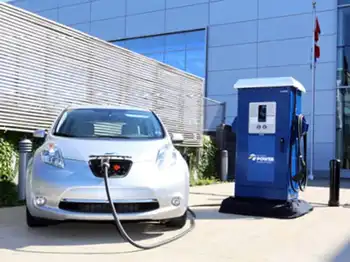Asset Management Firm to Finance Clean Coal Technologies Inc.

NFPA 70e Training - Arc Flash
Our customized live online or in‑person group training can be delivered to your staff at your location.

- Live Online
- 6 hours Instructor-led
- Group Training Available
Clean Coal Technologies Pristine Funding secures investment from a New York asset manager via Black Diamond, advancing commercialization, Tulsa testing, Wyoming relocation, PRB coal enhancement, and cleaner energy innovation to support global coal exports.
Key Points
Capital from a New York asset manager backs Pristine commercialization, testing, and Wyoming relocation to boost PRB coal.
✅ Investment via Black Diamond funds Tulsa test operations.
✅ Permanent relocation planned near a Wyoming mine site.
✅ First Pristine M module to enhance PRB coal quality.
Clean Coal Technologies, Inc., an emerging cleaner-energy company utilizing patented and proven technology to convert untreated coal into a cleaner burning and more efficient fuel, announced today that the company has secured funding for their Pristine technology through commercialization, a move reminiscent of Bruce C project funding activity, from a major New York-based Asset Management company. This investment will be made through Black Diamond with all funds earmarked for test procedures at the plant near Tulsa, OK, at a time when rare new coal plants are appearing, and the plant's move to a permanent location in Wyoming. The first tranche is being paid immediately.
"Securing this investment will confidently carry us through to the construction of our first commercial module enabling management to focus on the additional tests that have been requested from multiple parties, even as US coal demand faces headwinds across the market," stated CEO of Clean Coal Technologies, Inc., Robin Eves. "At this time we have begun scheduling plant visits with both US government agency and coal industry officials along with key international energy consortiums that are monitoring transitions such as Alberta's coal phaseout policies."
"We're now able to finalize our negotiations in Wyoming where the permitting process has begun and where we will permanently relocate the test facility later this year following completion of the aforementioned tests," added CCTI COO/CFO, Aiden Neary. "This event also paves the way forward to commence the process of constructing the first commercial Pristine M facility. That plant is planned to be in Wyoming near an operating mine where our process can be used to enhance the quality of PRB coal to make it more competitive globally, even as regions like western Europe see coal-to-renewables conversions at legacy plants, and help restore the US coal export market."











